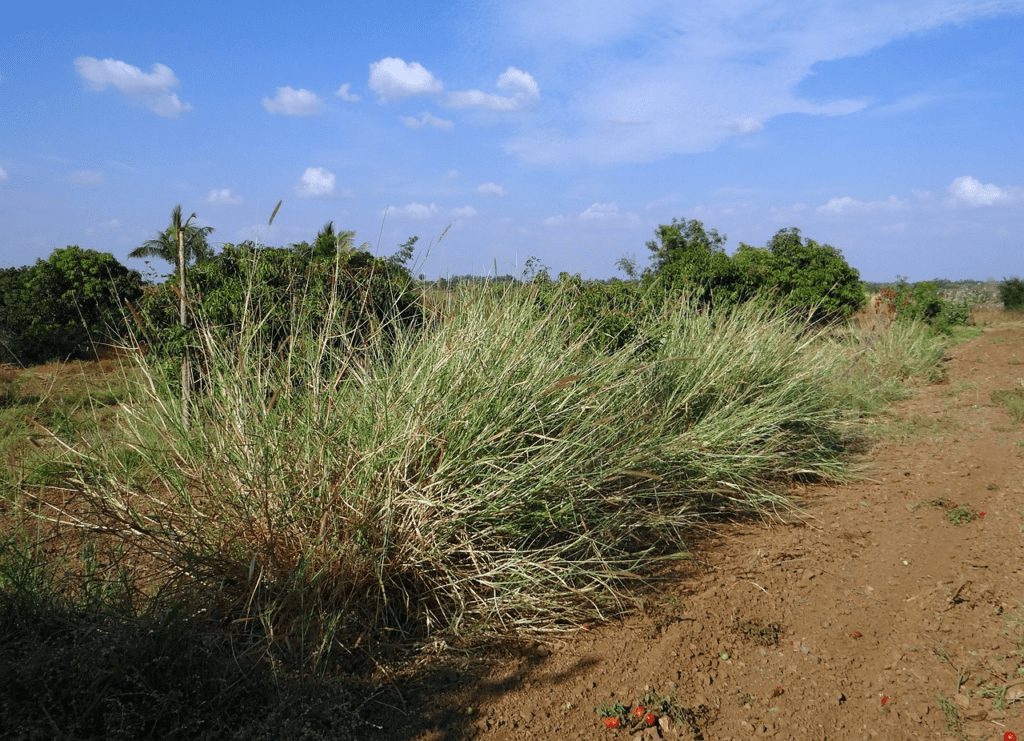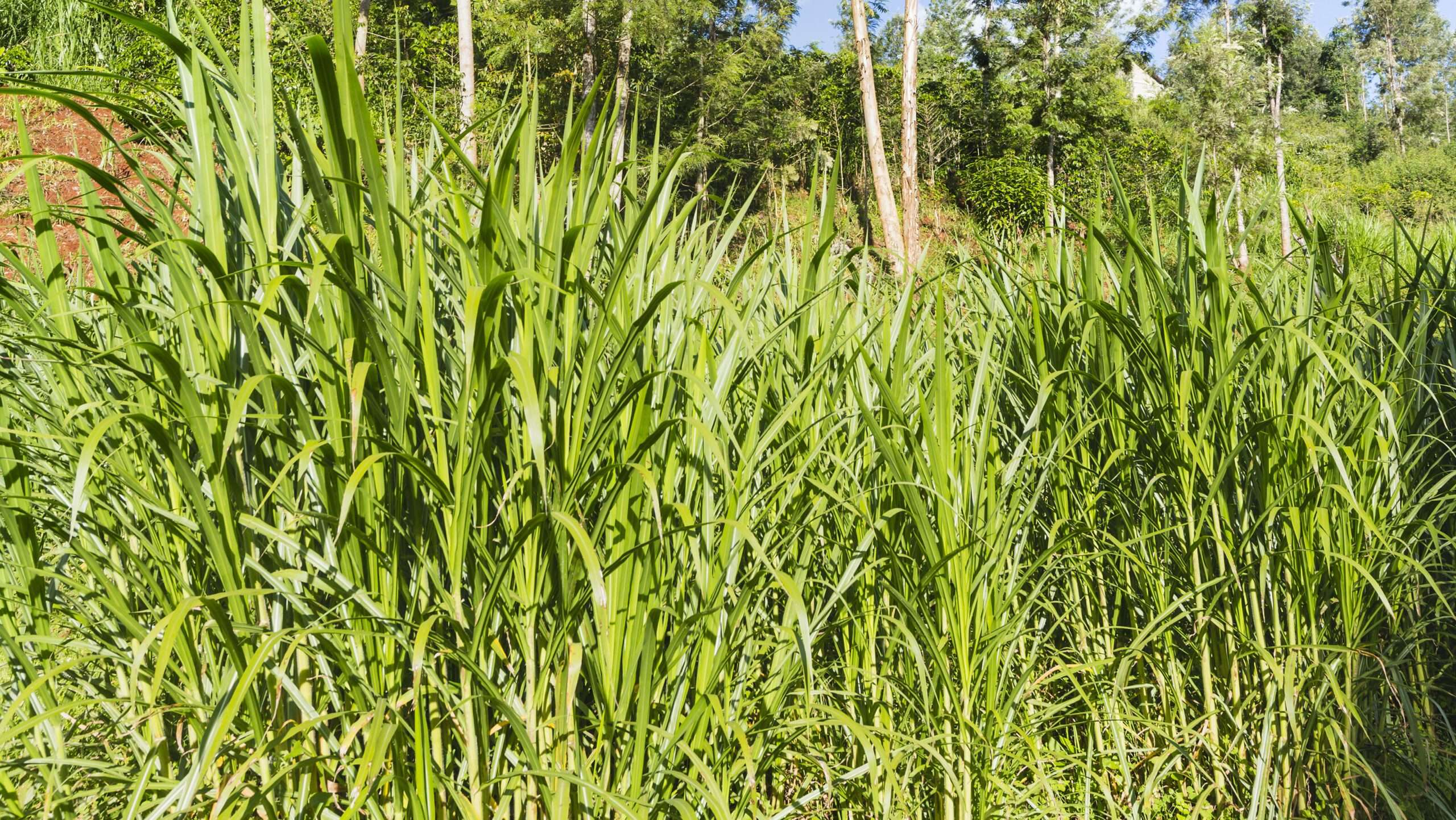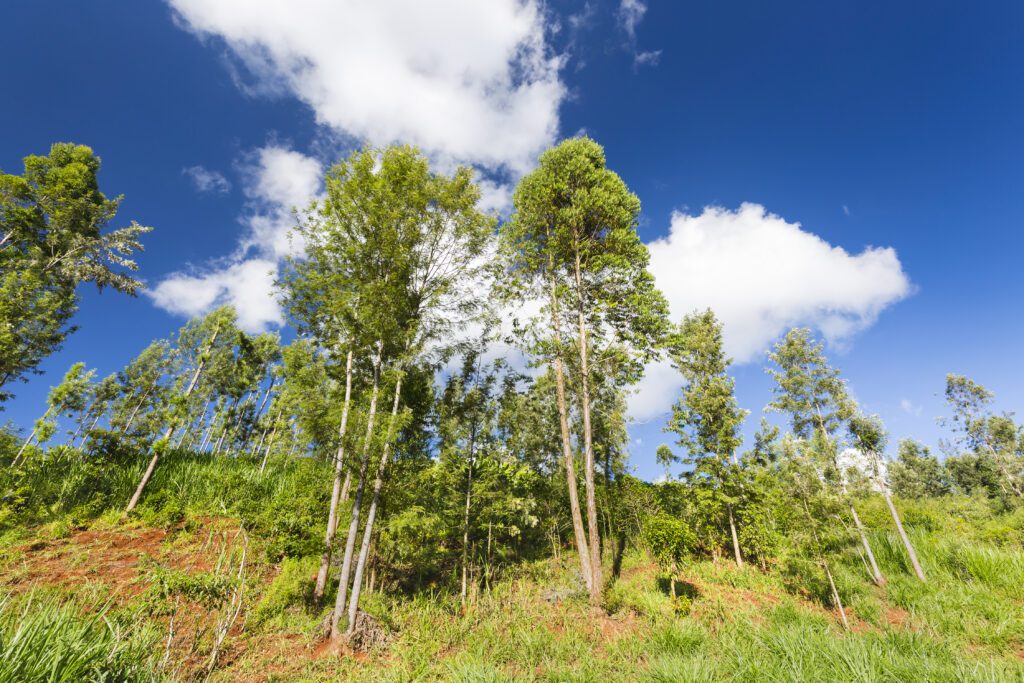Napier grass, scientifically known as Cenchrus purpureus or Pennisetum purpureum, is a remarkable perennial tropical grass that hails from the African grasslands. Also referred to as elephant grass or Uganda grass, Napier grass has gained increasing attention due to its adaptability, low water and nutrient requirements, and a wide range of applications. In this article, we’ll delve into the fascinating world of Napier grass, exploring its characteristics, uses, and the pivotal role it plays in sustainable agriculture and environmental conservation.
Table of Contents
Introduction to Napier Grass

Napier grass, a member of the Poaceae family, is an imposing plant that forms dense clumps resembling bamboo. Its unique feature lies in its propagation through horizontal shoots known as stolons. These stolons extend from the parent plant to offspring, making it a highly effective method of reproduction. Interestingly, while it can be propagated through seeds, the inconsistency in seed production makes this approach challenging.
To overcome this issue, Napier grass can also be grown using stem cuttings from stolons. These cuttings are planted in furrows with a spacing of 80 centimeters between and along the rows, providing an efficient and reliable means of cultivation.
The Versatility of Napier Grass
Cultivating Napier grass opens the door to a wealth of advantages, making it a valuable asset in agriculture and beyond. Let’s delve into the multifaceted benefits of this remarkable grass:
1. Nutrient-Rich Fodder
Napier grass stands as a perennial source of green fodder, available year-round. Its fodder is not only abundant but also rich in nutrients, making it a pivotal resource for dairy farmers in East Africa. With its exceptional productivity, Napier grass is particularly well-suited for feeding cattle and buffaloes, contributing to the well-being of livestock.
2. High-Value Varieties
Hairless varieties like the Ugandan hairless Napier grass offer even higher value as fodder. These variants are prized for their enhanced nutritional content, further bolstering their role in sustaining livestock.
3. Thriving in Arid Lands
Napier grass’s ability to thrive with minimal water and nutrients is a game-changer for agriculture in arid regions. By allowing grazing on these otherwise unproductive lands, it transforms arid areas into valuable sources of food production.
4. Environmental Guardian
Beyond its role in livestock feeding, Napier grass serves as a guardian of the environment. It acts as a bulwark against soil erosion, functions as a firebreak to protect against wildfires, acts as a windbreak to shield against harsh winds, and enhances soil fertility.
5. Bioenergy Potential
In recent years, Napier grass has stepped into the realm of bioenergy production. With approximately 2 billion hectares of non-arable land suitable for energy crop cultivation, Napier grass is poised to alleviate pressure on food production. Technologies like thermal pyrolytic conversion can transform Napier grass into valuable resources such as charcoal, biogas, and bio-oil. This holds the promise of not only providing energy to African communities but also enriching local soil quality.
6. Culinary and Industrial Applications
Napier grass doesn’t stop at livestock feed and bioenergy. Its young leaves and shoots are edible and find their way into a variety of culinary creations, including soups and stews. In a fascinating twist, a Dutch company has even harnessed Napier grass to create a plastic material suitable for packaging, showcasing its potential in industrial applications.
Napier grass is a versatile and indispensable component of East African agriculture, offering nutrient-rich fodder, environmental protection, bioenergy potential, and a range of culinary and industrial applications. Its ability to thrive in challenging conditions and provide an array of benefits underscores its importance in the region.
Also read: Jatropha Curcas: A Climate Resilient Plant
Economic Applications of Napier Grass

Napier grass, renowned for its versatility, extends its economic utility far beyond serving as mere fodder. This remarkable grass has found diverse applications, contributing significantly to various sectors. Here’s a comprehensive look at the economic uses of Napier grass:
1. Fodder for Livestock
Napier grass remains a staple choice for livestock feed. It can be directly fed to cattle, offering them a nutritious and palatable food source. Furthermore, it can be processed into hay or silage, making it an excellent option for preserving and storing feed. In regions of Africa, Napier grass earns the moniker “elephant grass” due to its role as a forage for these majestic animals.
2. Biomass Production
Napier grass plays a pivotal role in biomass production. Remarkably, it can be harvested up to six times in a single year, making it an abundant and sustainable source of biomass. This feature positions it as a valuable raw material for the production of biofuels, contributing to the renewable energy sector.
3. Soil Improvement
Farmers recognize the value of Napier grass in soil enhancement. Planted on marginal slopes and lands, it aids in soil fertility improvement and erosion control. By stabilizing the soil and preventing erosion, Napier grass contributes to more sustainable land use practices.
4. Paper Production
Napier grass takes center stage in the paper production industry. Its fibrous nature makes it an ideal source for manufacturing paper in many regions across the country. Its cultivation is integral to sustaining the paper manufacturing sector.
5. Pest Management Strategy
Napier grass plays a unique role in integrated pest management strategies. It serves as a “pull” crop, effectively attracting pests away from valuable crops. By luring these insects out of the main crop, Napier grass assists in pest control while promoting eco-friendly and sustainable farming practices.
6. Culinary Delights
The young leaves and shoots of Napier grass are not just for livestock; they are also a source of nutrition for humans. In various cultures, these edible parts of the grass find their way into stews and soups, adding a touch of uniqueness to culinary traditions.
Napier grass is a multifaceted resource with a wide range of economic uses. From livestock fodder to biomass production, soil improvement, paper manufacturing, pest management, and even culinary applications, this versatile grass offers a plethora of benefits across different sectors. Its sustainable and eco-friendly attributes make it a valuable asset for both farmers and industries, paving the way for a more environmentally conscious and economically viable future.
A Valuable Resource for Cattle and Its Advantages

Napier Grass for Cattle
Napier grass is an excellent resource for cattle, providing a source of nutritious feed. To make the most of this resource, consider the following practices:
- Chopping for Efficiency: When harvesting Napier grass, it’s advisable to chop it. This not only facilitates easier handling but also reduces wastage when feeding animals. Grazing should be avoided to prevent direct consumption by the animals.
- Optimal Feeding Amount: When feeding Napier grass to cows, limit the daily intake to approximately 60 to 70 kilograms of fresh grass per cow. This ensures a balanced diet and efficient utilization of the available feed resources. Remarkably, an acre of land planted with Napier grass can sustainably feed two dairy cows for an entire year.
Advantages of Napier Grass
Napier grass boasts several advantages that make it a valuable asset for livestock and agricultural endeavors:
- Ease of Propagation: One of the key benefits of Napier grass is its ease of propagation. The soft stem of the grass makes it simple to cut and establish new plants. This characteristic streamlines the cultivation process.
- Drought Resistance: Napier grass has deep roots, making it remarkably resilient to drought conditions. This is a crucial advantage, especially in areas where water resources may be limited. The grass can continue to thrive even during dry spells.
- Nutritious Feed: The young and tender leaves of Napier grass are not only nutritious but also highly palatable when used as feed for livestock and cattle. This ensures that the animals receive a well-balanced and appetizing diet.
- Rapid Growth: Napier grass exhibits rapid growth, allowing for frequent harvests. This feature ensures a consistent supply of feed, making it a practical choice for feeding cattle and sustaining livestock.
Napier grass is a versatile and valuable resource for cattle, offering a reliable source of nutritious feed. Its advantages, including ease of propagation, drought resistance, and rapid growth, further underscore its importance in agricultural practices. By optimizing the use of Napier grass, farmers can enhance the health and productivity of their livestock while effectively managing their feed resources.
Also read: The Impacts of Climate Change on Livestock and Sustainable Food Systems
Cultivating and Harvesting Napier Grass for Optimal Yields

Napier grass, a versatile and robust crop, holds immense potential for various agricultural applications. From livestock fodder to biofuel production, proper cultivation and harvesting techniques are essential to maximize yields. In this comprehensive guide, we’ll explore the critical steps involved in growing and harvesting Napier grass.
1. Climate Considerations
Napier grass exhibits remarkable drought tolerance, thriving even in arid regions. However, it’s most suitable for areas with high rainfall, where it can reach its full potential. Avoid planting Napier grass in waterlogged or soggy soils, as it doesn’t flourish under such conditions. To combat soil erosion, consider planting it alongside fodder trees or on contour lines. Napier grass can also be intercropped with crops like fodder trees and legumes. It performs exceptionally well at altitudes between 1800 m and 2000 m above sea level and thrives in temperatures ranging from 26°C to 42°C.
2. Soil Preparation
Napier grass is adaptable to various soil types, with light loamy and sandy soils being the most preferred. While it tolerates wet soil at the root level, ensure that it doesn’t become waterlogged. Avoid planting Napier grass in areas prone to flooding. The best yields are obtained from fertile soils rich in organic matter and nutrients. Ensure that the soil pH falls within the range of 5 to 8 for optimal growth.
3. Field Preparation
Before embarking on Napier grass cultivation, thoroughly plough and harrow the field. Create a well-prepared seedbed to facilitate successful plantation.
4. Sowing Napier Grass Seeds
In India, Napier grass is typically sown from the last week of February to the last week of August during warm climatic conditions. For maximum yields and returns, aim to sow by the end of February. Late sowing results in only one cut by the last week of November, followed by a period of dormancy.
5. Plantation Methods
Napier grass can be planted using two methods:
Conventional Method
- Dig holes up to 20 centimeters wide and 20 centimeters deep, maintaining a distance of 90 centimeters between rows and 60 centimeters between plants.
- Apply 10 to 12 tonnes of farmyard manure in each hole.
- Insert a cane with three nodes at a slanted position in the soil, ensuring two nodes are covered.
- Place splits of the root in the planting holes and cover with soil.
Thumbzika Method
This method is more effective and yields higher herbage, particularly in dry seasons. There are two types: Round pit and rectangular pit.
For round pits, dig to a depth of 60 centimeters and a width of 90 centimeters, with rows 60 centimeters apart. For rectangular pits, maintain the same depth and width but vary the length as per available land.
- Mix 1 part topsoil with 2 parts farmyard manure and place it in the pits, leaving a 15 cm gap at the top.
- Plant about 10 cane cuttings in round pits or 10 cuttings for every 90 cm of length in rectangular pits.
- Plant the cuttings at a 30° angle from the ground, burying two nodes in the soil and leaving one above ground.
- Plant multiple rows with a 3-foot spacing between them.
- Slips can be planted without waiting for them to grow, as they establish seedlings rapidly.
- Trim the roots to a length of about 2.5 inches.
- Plant the seedlings in small holes or furrows, covering the roots with soil while keeping the shoots exposed.
- Plant the entire stem during heavy rainfall and in hilly areas to facilitate rapid ground cover and sprouting.
- Consider contour line planting to control soil erosion.
- Trim young stems to a length of about 5 feet.
- Place the stems end-to-end in furrows and cover them with soil.
- Water immediately after planting.
6. Harvesting
Napier grass is typically ready for harvesting 3-4 months after planting and can be harvested every 6-8 weeks for 3-5 years. Leave a stem length of 10 cm from the ground during harvesting to ensure regrowth.
7. Storage
Napier grass can be used as green livestock feed. Excess green feed can be preserved as silage. In terms of potential yields, it depends on agro-ecological zones and management, but on average, Napier grass can yield up to 45 tons/ha of fresh weight. Proper timing of harvest and storage is crucial to maintain quality and prevent spoilage. Store the grass in well-ventilated areas, away from moisture and pests, to prolong its shelf life.
Napier grass offers a plethora of economic opportunities, from livestock feed to biofuel production. With proper cultivation and harvesting practices, farmers can unlock its full potential and contribute to sustainable agriculture and renewable energy production.
Challenges in Napier Grass Cultivation

Napier grass (Pennisetum purpureum) stands as a perennial tropical grass celebrated for its robust biomass production and nutritional benefits. Yet, like any agricultural pursuit, Napier grass cultivation is not without its share of challenges. In this article, we will delve into the common hurdles faced by farmers engaged in Napier grass cultivation and explore effective strategies to overcome them.
1. Pest and Disease Management
Napier grass, despite its resilience, is susceptible to a range of pests and diseases that can significantly impede its growth and productivity. Notable adversaries include armyworms, aphids, and grasshoppers, along with diseases like smut, leaf spot, and rust. To effectively combat these challenges, it’s essential to implement integrated pest management strategies. These strategies may encompass regular monitoring, stringent sanitation practices, the cultivation of resistant varieties, and the introduction of biological control agents.
2. Weed Control
Weeds, the relentless competitors for essential resources such as water, nutrients, and sunlight, pose a constant threat to Napier grass. Effective weed control is imperative to ensure the crop’s optimal growth and yield. Farmers employ various methods, including manual weeding, mulching, and judicious herbicide application. When using herbicides, it is crucial to select products safe for Napier grass and adhere to recommended application rates to prevent inadvertent crop damage.
3. Water Management
Adequate water is a fundamental requirement for the flourishing of Napier grass. However, improper water management can lead to either waterlogging or drought stress, both of which can adversely affect the crop. To maintain optimal soil moisture and prevent water-related stress conditions, precise irrigation scheduling based on the crop’s water needs and soil moisture levels is of paramount importance.
4. Nutrient Management
Effective nutrient management is indispensable for promoting robust Napier grass growth and achieving high biomass production. Conducting soil tests is the initial step to assess the soil’s nutrient status, enabling informed fertilizer application. While nitrogen, phosphorus, and potassium represent the primary nutrients required by Napier grass, micronutrients like iron, manganese, and zinc also play crucial roles. Enhancing soil fertility and nutrient availability can be achieved through the application of organic matter, such as compost or manure.
In conclusion, Napier grass cultivation presents its fair share of challenges, ranging from pest and disease management to weed control, water management, and nutrient considerations. By implementing sound agricultural practices and staying vigilant, farmers can navigate these challenges successfully and harness the full potential of Napier grass for both livestock and biomass production.
Also read:


